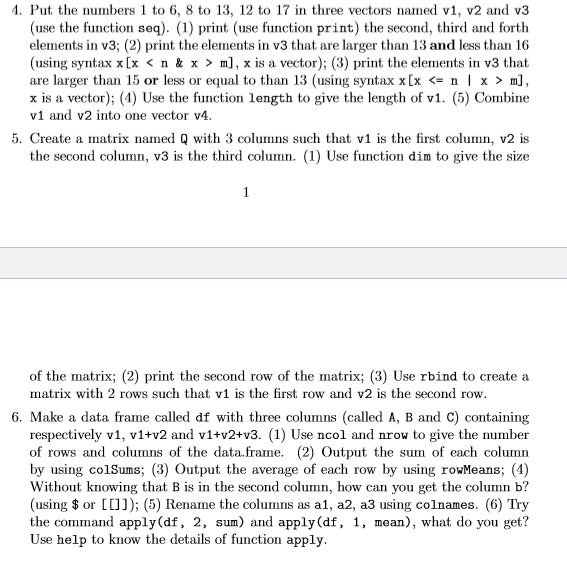Answered step by step
Verified Expert Solution
Question
1 Approved Answer
Please answer using Rstudio Put the numbers 1 to 6, 8 to 13, 12 to 17 in three vectors named v1, v2 and v3 (use
Please answer using Rstudio

Step by Step Solution
There are 3 Steps involved in it
Step: 1

Get Instant Access to Expert-Tailored Solutions
See step-by-step solutions with expert insights and AI powered tools for academic success
Step: 2

Step: 3

Ace Your Homework with AI
Get the answers you need in no time with our AI-driven, step-by-step assistance
Get Started


